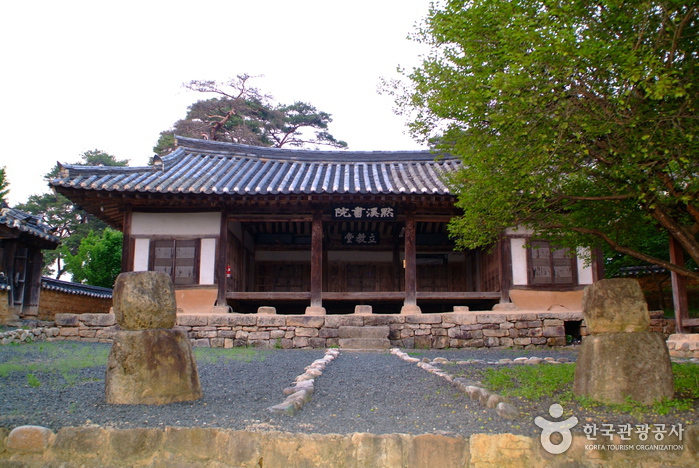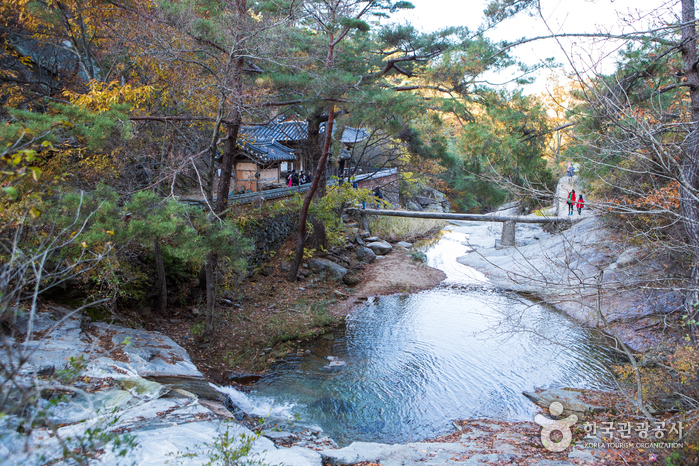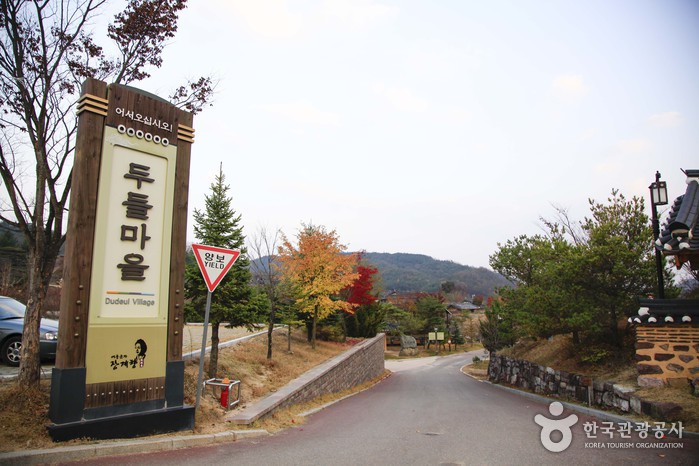Cheongsong Yasong Art Gallery (군립 청송야송미술관)
14.1 Km 13513 2021-07-07
5162, Gyeongdong-ro, Cheongsong-gun, Gyeongsangbuk-do
+82-54-870-6536
The Cheongsong Yasong Art Gallery opened on April 29, 2005. The art gallery exhibits 350 Korean paintings and pottery works of Yasong Lee Won-jwa, who is a traditional Korean painter native to Cheongsong. Also on display are around 50 works of noted painters and sculptors from in and out of Korea, and over 10,000 art books, all of which have been donated to the gallery. The two-story building was formerly Sinchon Primary School, which was remodeled into an art gallery after its closure.
Mukgyeseowon Confucian Academy & Mukgye Head House of Andong Kim Clan (묵계서원 및 안동김씨 묵계종택)
17.9 Km 20714 2024-05-29
1736-5 Chunghyo-ro, Giran-myeon, Andong-si, Gyeongsangbuk-do
Mukgyeseowon Confucian Academy was founded in 1687, but was mostly destroyed in 1869, leaving just the lecture hall behind. Recently, these removed buildings have slowly been rebuilt to restore the academy to its former glory.
Mukgye Head House of the Andong Kim Clan is located near the Confucian academy and features a shrine to Bobaekdang, the founder of the academy. The house was built in a square shape with an open courtyard in the middle and has been maintained in good condition.
Manhyujeong Pavilion (만휴정)
18.2 Km 19074 2024-05-29
42 Mukgyehari-gil, Andong-si, Gyeongsangbuk-do
+82-54-852-6800
Manhyujeong Pavilion is the pavilion of Bobaekdang Kim Gye-haeng and was built in 1500. The present building shows a modified appearance through remodeling, and only a part shows the style of the late Joseon dynasty. Kim Gye-haeng was a civil servant in the early Joseon dynasty and held various government posts. However, when he met the tyranny of Yeonsangun, he abandoned the government post and returned to his hometown. After that, a small pavilion was built along Seolmot (currently Sosan 2-ri), but since it was next to the road, he built Manhyujeong Pavilion in a quieter place. If you cross the stream from Mukgyeseowon Confucian Academy and enter the mountain, you can find it located in a magnificent valley that faces southeast and has a waterfall flowing over the rocks.
YeongYang Doodle Village (영양 두들마을)
19.9 Km 20567 2020-02-10
62, Dudeulmaeul-gil, Seokbo-myeon, Yeongyang-gun, Gyeongsangbuk-do
+82-10-7373-8337
Located in the administrative district of Wonri-ri, Seokbo-myeon, Yeongyang-gun, Gyeongsangbuk-do, Doodle Village's name means ‘village on a hill’ in Korean. In 1640, Lee Sim-yeong who used the pen name Seokgye, decided to build the village as an escape during the second Manchu invasion in Korea. His descendants, the family of Lee Jae-ryeong have lived and continued to build up the village since his settlement. In the year 1899 during the Joseon dynasty, Gwangjewon, the national hospital back then, was also established nearby. After the last syllable of Gwangjewon, the village was also called Wondoodle or Wonri
The village master, Seokgye, lived in his own house called Seokgye Gotaek (old Hanok house) and Seokgye Seodang, a private learning institute where he taught his students. The village also treasures many cultural heritages including 30 houses, a memorial stone for Madam Jang's first cookbook written in Hangeul (Korean alphabet) and Gwangsan Literature Laboratory, set up by famous writer Lee Mun-yeol.
Hwamaecheon Stream wraps around the village and on the rocky cliff hugging the stream, the fourth son of Master Seokgye set up Dongdae, Seodae, Nakgidae, and Sesimdae.
The village was designated as a cultural village in 1994 by the government.




 English
English
 한국어
한국어 日本語
日本語 中文(简体)
中文(简体) Deutsch
Deutsch Français
Français Español
Español Русский
Русский